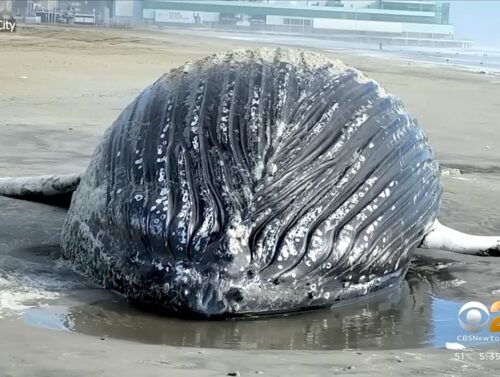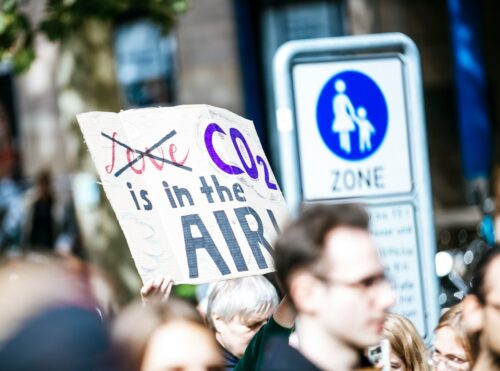
For many Americans, summer still conjures images of “those lazy, hazy, crazy days of summer,” romanticized by the legendary Nat King Cole: hot dogs, picnics, beer, and girls in bikinis at the beach. [emphasis, links added]
But for many media outlets, summer is a time to panic about deadly threats from heat waves that will continue to get worse until the world stops using fossil fuels.
New research, however, casts doubt on the theory that carbon dioxide levels are the primary driver of rising temperatures.
A phenomenon called the “urban heat island effect [UHI effect],” according to the study, could be contributing much more to global warming than originally thought. As populations in an area begin to rise, so do temperatures, the study found.
If true, this means efforts to reduce fossil fuel use, which experts warn will mean more frequent blackouts and render industry at scale impossible, may not be entirely effective at lowering temperatures.
Media’s Headlines Sung From Same Choirbook
Bloomberg News reported Sunday that some isolated areas will experience heat waves in the coming days.
“The scorching conditions threaten to tax power grids, wilt crops and send energy prices soaring across three continents,” Bloomberg warned.
Nowhere does the article mention that crops across multiple regions are seeing record-high yields over trends lasting decades.
The Associated Press reported last week that summer will bring “illness, death, crop losses, and strained energy and healthcare systems.” The article cites the World Weather Attribution as its source for these warnings, which is a group of climate activists developing research that seeks to win climate lawsuits against oil companies.
“Without phasing out fossil fuels, heat waves will continue becoming more severe and frequent and protective measures against the heat will lose their effectiveness,” the Associated Press article warned.
Dr. Matt Wielicki, former assistant professor in the Department of Geological Sciences at the University of Alabama, told Just the News that the data regarding UHI largely gets ignored because there’s too much money directed towards researching the impacts of greenhouse gas emissions and renewable projects to replace fossil fuels.
“It’s hard to regulate development and cities, and nobody’s going to go along with dismantling cities and taking apart airports, right? So there’s no money, there’s no profit to be made in admitting that the land-use changes are definitely a big factor in changing temperatures,” Wielicki said.
Ignoring “Urban Heat Islands”
Wielicki provided a couple of examples of recent headlines in The Guardian and San Francisco Chronicle sensationalizing summer’s high temperatures and blaming it all on fossil fuels, in his “Irrational Fear” Substack.
“These sensationalist stories conveniently omit crucial context: urbanization and land use changes, rather than GHG [greenhouse gas] concentrations, drive much of this observed warming. Airports and city centers, common locations for temperature measurements, amplify heat readings due to extensive concrete and reduced vegetation,” Wielick wrote.
The urban heat island effect is a well-known phenomenon, and researchers have been studying its impacts for decades. As the population of an area increases, so does the amount of development.
The concrete and asphalt in roads, bridges, buildings and other infrastructure increases temperatures. Air conditioners cool spaces by removing heat, which is then ejected out of a building, and that is believed to raise city temperatures as well.
New research by two University of Alabama in Huntsville (UAH) climate scientists found that the warming effect of urbanization may play a larger role in rising temperatures than much of the media lets on.
The study, which was published in the peer-reviewed Journal of Applied Meteorology and Climatatology, found that 65% of the total warming trend between 1895 and 2023 was due to increasing population density at the suburban and urban weather stations.
Increasing population density, according to the study, contributed to 8% of the total warming at rural stations.
Read rest at Just The News



















Way too much Urbanization takes up the land where Wildlife dwelled and the Concreate and Asphalt give off the Heat in the Summer
“But only 0.9% of Earth is where UHI is largest”
So why are 80+% of all thermometers sited there ?
The Spencer study is pure baloney.
85.5% of Earth’s surface has no UHI:
71% oceans +14.5% uninhabited land. …
Only 14.5% could have UHI warming
But only 0.9% of Earth is urban where UHI is largest
UHI is a minor cause of global warming.
Most of the UHI effect Spencer claimed:
Happened prior to 1970.
The paper only looks at summertime data
US only (only 1.6% of the globe)
It uses “Raw” temperature only, not very accurate before satellite data in 1979.
Ph.D. Baloney.
One more posting by the great Richard Greene who has an MBA telling us how horrible anything he disagrees with. Let us know when you have gotten an advanced degree in meteorology, geology or other degree related to climate.
You ignored every fact I presented in my comment and resorted to childish insults.
Congratulations.
My Climate Science and Energy website has had over 1,139,000 page views because I do a good job of telling the difference between real science and junk science.
https://honestclimatescience.blogspot.com/
Of the thermometers used for ‘official’ temperatures, what proportion is located in the 0.9% affected by UHI? 20%? 50%? 80%? I have a hunch, but would like to hear the actual percentage.
I’ll check back daily for your reply for the next five days.
0.9% when you use UAH satellite data, which are compiled by Spencer, who wrote the UHI study.
Spencer claims most of the UHI warming was before 1970.
The UAH data began in 1979
The current global warming trend began in 1975. so data before 1970 is useless.
The USCRN all rural temperature networks since 2005 Is designed to have no UHI
According to Spencer, it should show much less warming than nClimDiv which does include UHI. But NOAA. says that their USCRN has a faster warming rate than their nClimDiv
That falsifies Spencer’s model during a period of rapid global warming
With the exception of USCRN, land based weather stations tend to be where people live.
That’s why it’s best to use UAH satellite data and USCRN rural weather stations.
If Spencer’s theory was right, UAH and USCRN should show a lot less warming than surface. weather stations used for the global average temperature allegedly contaminated with a lot of UHI warming (Of course the oceans, 71% of Earth’s surfaces, have no UHI).
In fact, since 2014, UAH with minimal UHI, and USCRN with no UHI, have MORE warming than surface weather stations with UHI used for the global average temperature. Those facts also falsify Spencer’s theory.
Simple question: what proportion of official thermometers are located in the 0.9% affected by UHI? All I’m asking for is a percentage. Can you provide it or not?
Bye Richard. It’s 1800 MST, June 11/2025.